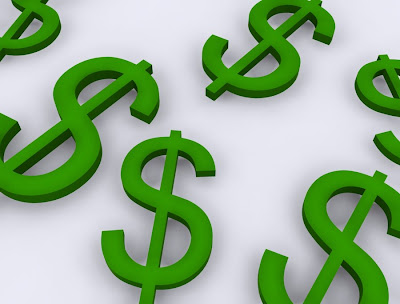How Much Money Should You Have in An Emergency Fund?
 While
growing up, a lot of us had moms that used to tell us to save a couple
of dollars for a rainy day. Back then, if we listened, that was probably
"piggy bank cash" that we put towards a new pair of sneakers or pair of
jeans.
While
growing up, a lot of us had moms that used to tell us to save a couple
of dollars for a rainy day. Back then, if we listened, that was probably
"piggy bank cash" that we put towards a new pair of sneakers or pair of
jeans.In adult terminology, saving that kind of money would probably now be called an emergency fund, and rather than use that money for getting things that we want, it's more for taking care of some of our unexpected needs. Although stashing away some of our income for any potential unforeseen incidents like an extensive car repair or even the loss of a job makes perfect sense, unfortunately, a lot of us still do not have one because we're not sure how to begin or how much we'll need.
Here are some answers to both dilemmas.
Start Saving
There are two really good reasons why an emergency fund is a good idea. One of them we've already discussed, which is having money for any unexpected mishaps. The other is so that you don't find yourself in debt when an emergency comes along (and it will) by borrowing money or using your credit cards. Therefore, it's a good idea to start saving immediately. When you get your very next paycheck, put $50 or so into your new emergency account. If you're not used to saving money, initially, that may seem like a lot, but that actually brings us to one more benefit of establishing an emergency fund: it gets you into the habit of saving money.
How Much Should You Save?
Financial experts tend to differ in opinion when it comes to a set figure, but one thing that most of them will probably agree on is, "It depends on how big of an emergency that you're planning for." With the economy being still in a place of influx and with health insurance co-pays rising along the price of gas, none of us can live with the assumption that the kind of money we make today is the kind that we will be making a year or quite possibly even a month from now; therefore, while it might seem like a really high bar, set your emergency fund figure for around 3-6 months of your annual salary. This will provide you enough breathing room to deal with just about any financial crisis, including unemployment.
Other Creative Ways to Save Money
As you start thinking about that 3-6 months savings plan and you get into the habit of putting that $50 into an emergency fund, it may motivate you to save more money so that you can get to your goal even faster. There are ways that you can do this that will not feel super extreme. The extra change that usually goes into your glove compartment can now go into your emergency fund.
When you go out dinner and you leave a tip, take note of how much it was and put that same amount into your emergency fund. If you budgeted out $300 for groceries this month and you only spent $220, don't spend that left over money on clothes. Put it into your emergency fund, instead. And yes, it's not a popular concept these days to spend cash instead of using your credit card, but as the old saying goes, "If you can't pay cash for it, you probably don't need it."
Another effective way to save money is to use "paper" instead of "plastic". Do you know how much credit card processors make in fees alone? If you started tallying that up, you would probably reach your 3-6 month emergency fund goal in no time!
No comments:
Post a Comment